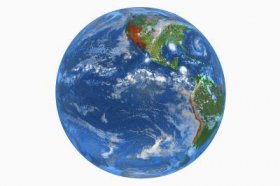Pollution and global warming facts
 Global warming is driven partially by human pollution.
Global warming is driven partially by human pollution.
The pollutants that contribute to global warming are commonly known as greenhouse gas emissions. Carbon dioxide is probably the best known greenhouse gas, but methane, nitrous oxide and fluorinated gases also play a role in driving climate change (see Reference 1). Human activities that cause global warming pollution can be best understand by examining the various sources of each type of greenhouse gas.
Carbon Dioxide
Carbon dioxide represents 85 percent of all greenhouse gas emissions emitted from human sources in the United States (See Reference 2). Globally, the largest source of carbon emissions is the combustion of fossil fuels like coal, natural gas and oil for energy. Electricity production is the single biggest generator of carbon emissions in the U.S. Transportation comes in second, followed by industry (see Reference 3). Carbon dioxide is also emitted naturally by animal and plant respiration, including humans. (See Reference 4)
Methane
A potent greenhouse gas, methane is even more effective at trapping heat in the atmosphere than carbon dioxide (see Reference 5). Methane emissions come from a number of human sources, including coal mining, landfills, natural gas and petroleum production, wastewater treatment and even rice cultivation. Livestock also emit methane, leading skeptics to joke about regulating cow flatulence (see References 6). Like cattle, wild animals like bison and buffalo also emit methane, although the vast majority of methane in all ruminants is expelled in the form of belching.
Nitrous Oxide
About 300 times more effective at trapping heat in the atmosphere than carbon dioxide (see Resources 1), nitrous oxide is no laughing matter. Nitrous oxide contained naturally in soil can be released by agricultural activities. Other anthropogenic sources include human sewage, livestock manure and adipic acid production. (See Resources 2)

